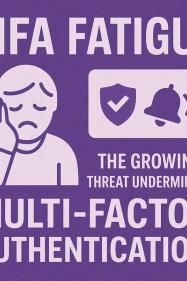Modern phishing detection is notoriously difficult. As technology evolves, so do attack patterns. What was once a simple scam exploiting an emotional lapse has become a sophisticated, multi-layered threat, with techniques that are harder to spot than ever.
In this article, we’ll redefine phishing for the modern age and explore how we, as humans, can build better instincts to detect it.
Modern Phishing: A New Definition
Not long ago, phishing emails were easy to identify. They were riddled with typos, awkward phrasing, and obviously broken design. Security awareness programs leaned heavily on these obvious tells, training people to look for misspellings, generic greetings, and strange-looking links.
Those days are over.
Today, phishing campaigns are powered by large language models (LLMs) and advanced toolkits. Attackers can generate near-perfect grammar, realistic company branding, and even replicate personal writing styles. This eliminates the traditional “red flags” many employees have been trained to spot.
Modern phishing isn’t just an email with a suspicious link. It could be:
- A PDF form requesting sensitive details.
- A simple question kicking off a benign-seeming conversation.
- A multi-step email thread that ultimately convinces someone to install a “critical patch,” change vendor payment details, or share confidential data.
In short, phishing has evolved far beyond laughably bad emails. It’s now a nuanced, often multi-stage social engineering tactic.
How to Detect Modern Phishing Attacks
To stand a chance against these tactics, we need to look deeper — at the underlying patterns and traits of phishing. From there, we can train ourselves (and our teams) to develop automatic defensive reflexes.
The Emotional Triggers Behind Phishing
At its core, phishing is a form of social engineering. It exploits psychological levers to drive quick, often irrational decisions. The most common triggers include:
- Authority: A request from the “CEO” or a “vendor” carries weight.
- Urgency: “Respond within 30 minutes or face penalties.”
- Fear: Warnings about account lockouts or compliance failures.
- Reciprocity: Small favors that lead to bigger asks.
- Curiosity: Enticing subject lines or confidential “scoops.”
Recognizing these emotional cues is key. If a message makes you feel pressured, worried, flattered, or overly curious, it might be by design.
Focus on the End Goal
Another lens for detection is understanding what phishing tries to achieve. Phishing often serves different phases of an attack chain, such as:
- Initial access: Capturing credentials, getting a victim to run malware, or persuading them to change critical data like payment instructions or passwords.
- Information extraction: Harvesting sensitive company or client data to fuel further attacks.
- Privilege escalation: Using limited access to gain higher-level credentials or broader control.
Ultimately, phishing is about bypassing established security processes — tricking a human into doing what technology would otherwise prevent.
The Key to Modern Phishing Detection
In environments with sound security controls and configurations, the real giveaway often comes down to two elements appearing together:
- Emotional triggers: The attacker pushes buttons — fear, urgency, curiosity — to hijack normal decision-making.
- Requests that bypass process: They urge you to break or bend policy. Share credentials. Ignore multi-person approvals. Install something outside IT channels.
When you see both — emotional manipulation combined with a nudge to override security — you’re likely looking at phishing or broader social engineering.
Building Reflexes to Spot Modern Phishing
The challenge is that these attacks are designed to short-circuit rational thinking. So how do we train ourselves (and our teams) to spot them in the heat of the moment?
Detect the Emotional Trigger
The most effective training isn’t a static slide deck; it’s realistic simulation.
Simulated phishing campaigns with rapid feedback — sometimes called “just-in-time training” — create a learning moment tied to the actual feeling of being manipulated. Over time, this strengthens instinct. When people feel that twinge of urgency or fear, they learn to pause and switch from autopilot to analytical thinking.
Know What to Look For
Once the emotional reaction is recognized, theoretical knowledge kicks in. Employees need to be able to spot process bypasses: direct requests for credentials, requests to change payment details without verification, or urgent software installs.
This combination of instinct plus understanding dramatically improves detection rates.
Encourage Reporting and Asking for Help
Even with the best instincts, uncertainty will happen. That’s why a strong security culture emphasizes reporting suspicious messages without fear.
Security teams worried about being flooded with false positives can leverage modern phishing triage tools to quickly filter harmless reports from genuine threats.
Closing Thoughts
Modern phishing detection is fundamentally about training people to override their own emotional reactions. By combining an understanding of social engineering triggers with clear security processes — and fostering a culture of quick reporting — organizations can significantly reduce their risk.

